Can you hit these 11 off-the-bike fitness and health benchmarks?
Throwing down almost a dozen strength, flexibility and health benchmarks, we dare you pedalling specialists to put some numbers on your all-round athleticism
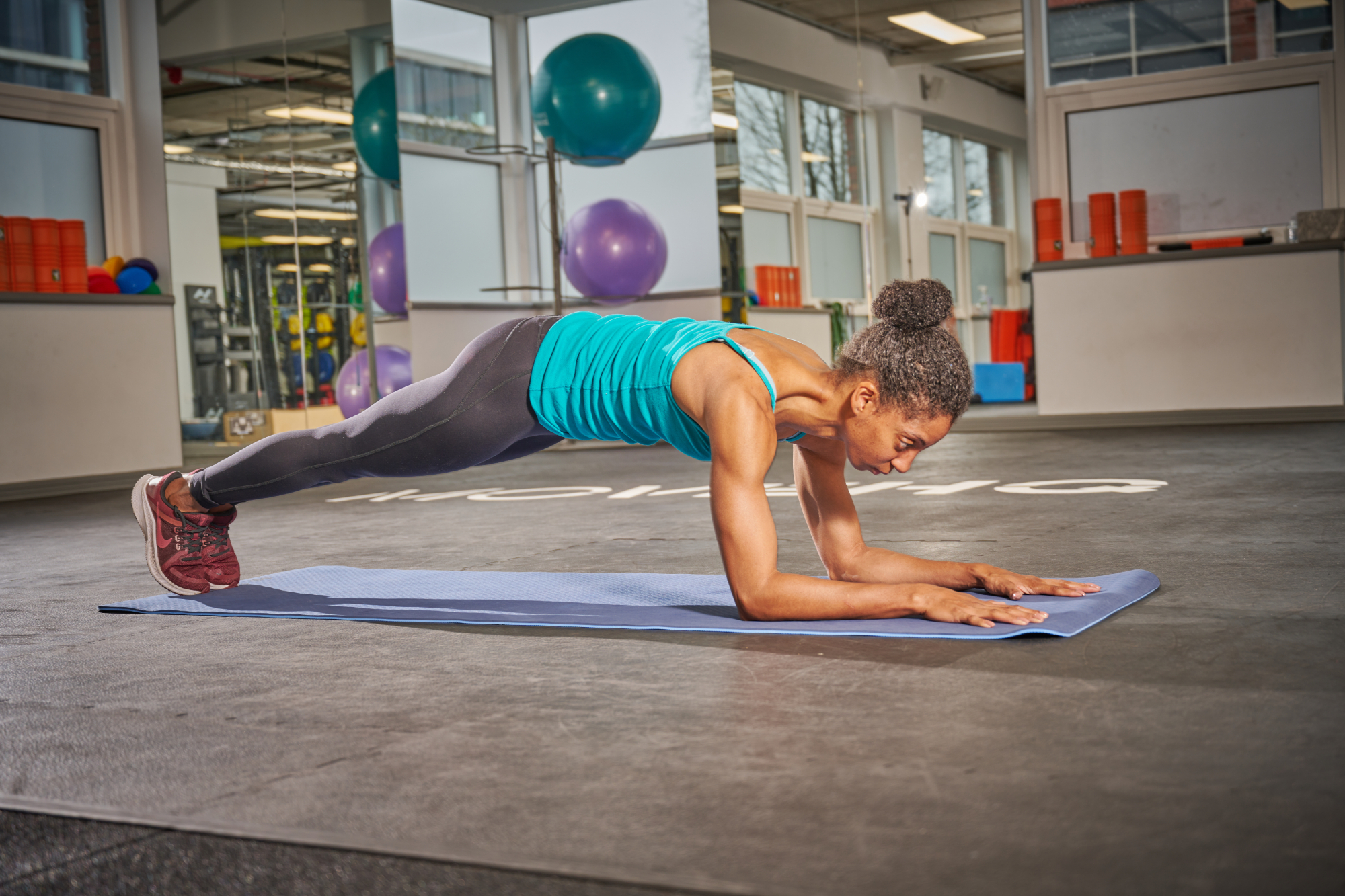
- Strength benchmarks
- 1. Squat
- 2. Romanian deadlift
- 3. Leg press
- Flexibility benchmarks
- 4. Wide-leg forward bend
- 5. Sit and reach
- Bodyweight exercises
- 6. Lunges
- 7. Plank
- 8. Press up
- General health benchmarks
- 9. Standing on one leg
- 10. Holding your breath
- 11. Vertical leap
- Pro rider views: ‘The gym works - you can feel the difference’
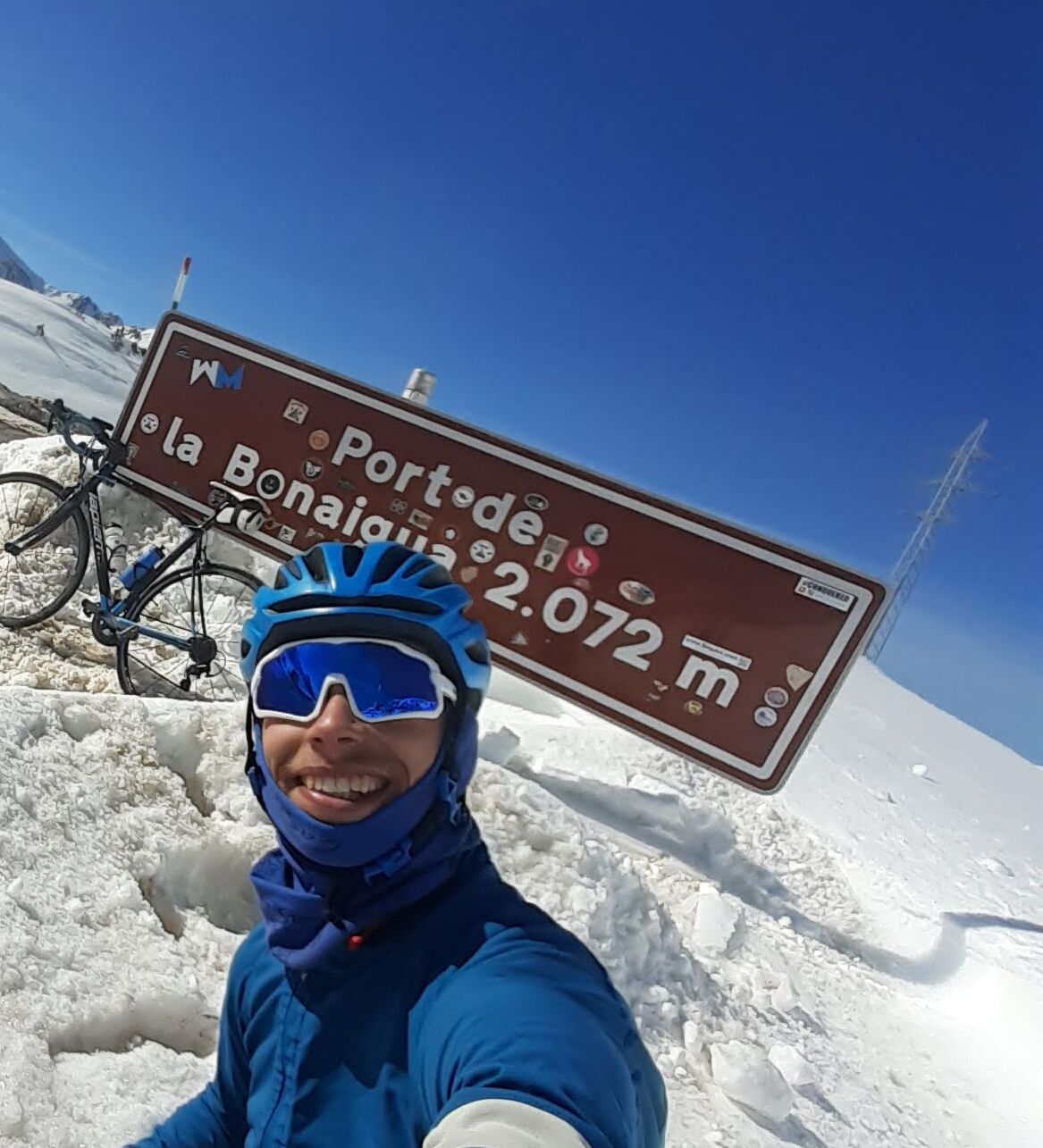
We get it. You’re a cyclist – you enjoy riding your bike, not picking up and putting down heavy objects. But bear with us. Strength and flexibility training really does benefit cycling performance for all types of rider – research has shown it time and again.
The biggest gains are made by cyclists who target their weaknesses and work towards objective targets. To that end, we’ve compiled a list of 11 key exercises, split into four categories, with benchmark targets for each. Start gradually, work on each one over the winter, and we promise you’ll notice the benefit once the spring sunshine returns.
Strength benchmarks
It’s an uncomfortable truth, admits British Cycling Strength and Conditioning coach Peter Gascoigne, but “athletes who have only ridden their bikes all their life really struggle for function and range of movement – they lack basic movement competence.”
Most other sports require a greater and less repetitive range of movements, he explains, whereas “cycling creates very one-dimensional athletes who are fit in a cycling sense, but often with many areas of weakness, stiffness and a lack of flexibility.”
This is why Gascoigne believes all cyclists, and particularly those aged over 40, need to make time for off-bike exercise.
“You need to make sure you’re looking after the joints, muscles and bones. If not, your musculoskeletal system will begin to decline.” These exercises won’t just fend off decline, they’ll also boost your cycling performance. “As well as basic movement,” adds Gascoigne, “strength training improves power production at the pedals. It’s a no-brainer.”
1. Squat
What is it? A simple but highly functional exercise where you lower the hips from a standing position, then stand back up. There are multiple forms, but the most beneficial for cyclists are the double-leg, single-leg, back and bench squats.
Get The Leadout Newsletter
The latest race content, interviews, features, reviews and expert buying guides, direct to your inbox!
Why do it? Gascoigne says: “Any variation of squatting helps stabilize the hip and works the prime movers.” In other words, hip, leg and core muscles are activated, improving mobility and strength.
How to do it? With feet shoulder-width apart and back straight, sit through the heels and push up through the mid foot. Bend the knees, lowering into the squat – as low as possible. Press through the heels to stand back up.
Benchmark: Gascoigne recommends starting with three sets of 10 bodyweight squats every few days for four weeks, before adding external loads. “A kettlebell, barbell or dumbbell of up to 30kg, held at the chest, will help you progress,” advises the coach.
Step it up: With sufficient training, a strong cyclist should be able to squat 1.5x their bodyweight.
2. Romanian deadlift
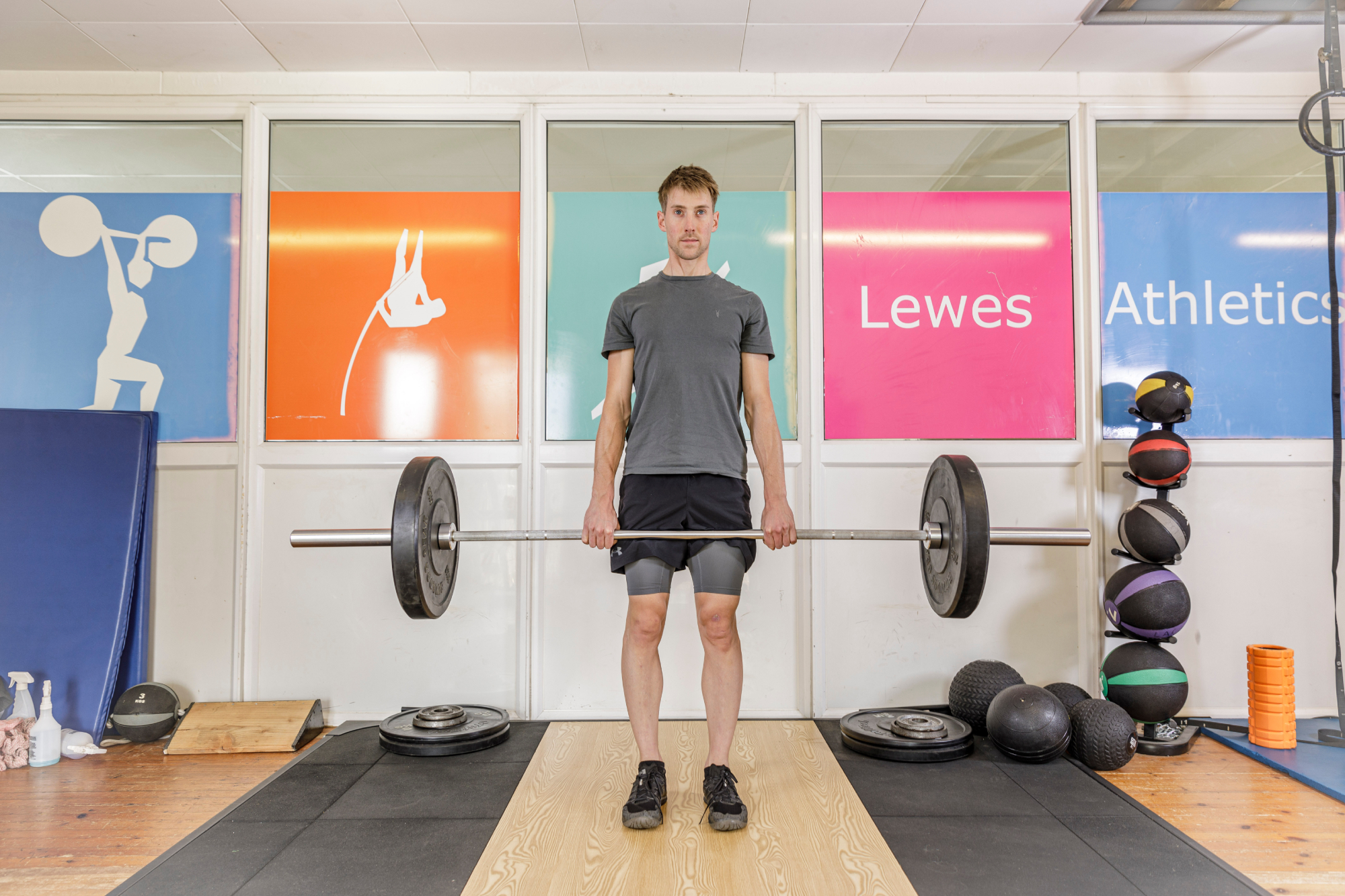
What is it? An exercise that not only targets the back, core, hips, arms and legs, but also trains you in lifting heavy loads. It’s all-round strength training in one move.
Why do it? “Deadlifts are so important,” opines Gascogine. “Hip-hinge movements where the spine is held firm and you move through the hips are beneficial because they strengthen the glutes and hamstrings, which are typically short in cyclists.”
How to do it? Adopt a stance with shins shoulder-width apart; bend down and grip the barbell with straight arms. Straighten your back, take a breath, and pull the bar up by extending your knees and hips until you are standing up straight, with the barbell resting just above the knees. Reverse the movement to lower the bar back to the floor. Repeat 10 times for two sets.
Benchmark: A decent amount to deadlift is 1.3x one’s bodyweight, but an optimal amount is 1.6x.
Step it up: With prolonged training, a strong cyclist should be able to deadlift twice their own weight.
3. Leg press
What is it? The leg press machine develops strength in the quadriceps, glutes, hamstrings and calves. “The stronger the glutes and hamstrings, the more back protection and greater power you are able to push out,” comments Gascoigne.
Why do it? “Leg press machines work the legs and the key cycling muscles hard without being technically demanding – just sit and push!”
How to do it? With a 90° knee angle, push the platform explosively away from you. Keep the heels flat and don’t lock the knees. Return slowly to the start position.
Benchmark: Start with three sets of 10, and over time decrease the number of reps as you add load. A suitable long-term aim is 1.5x of your bodyweight.
Step it up: Move from double-leg to single-leg work at half the weight.
Flexibility benchmarks

“People mistakenly link a lack of flexibility to the status of their health, which can be very misleading,” says bike racer turned yoga teacher Becci Curtis. "It’s normal for certain yoga poses and stretches to hurt or be difficult to achieve.”
Even so, the hard work pays off, in Curtis’s view. “A cyclist who improves their flexibility will have a better posture and be more comfortable in everyday tasks like bending down, getting up off the floor or out of bed. Your resilience and overall sense of well-being will benefit.”
4. Wide-leg forward bend
What is it? This exercise helps alleviate tight hamstrings and stretches the calves, hips and lower back.
Why do it? “This is another way of increasing the flexibility in the hamstrings and hips,” says Curtis.
How to do it? Stand tall, with the feet set wide apart, then bend forward from the hips without rounding the back while keeping legs straight.
Benchmark: Hold the position for 20 seconds, take a five-second break, and repeat three times a week.
Step it up: With each passing week, hold the position a few seconds longer.
5. Sit and reach
What is it? A standard test of the flexibility of the lower back and hamstrings.
Why do it? Curtis says: “This gets us into a position to stretch the hamstrings. Trying to touch your toes can be an unpleasant effort for many people, but done regularly it lengthens the hamstrings and improves their function.”
How to do it? Sit on the floor with straight legs, feet against a box, and lean forward with straight arms as far as you can go.
Benchmark: Aim to touch your toes. If you struggle, wrap a resistance band around one foot and hold onto it firmly while extending the other hand forward.
Step it up: The most flexible athletes are able to extend their whole hands beyond their toes; try to make incremental changes over time.
Bodyweight exercises
You don’t need gym machines or weights to build strength. Bodyweight is enough, provided you know how to use it. The three exercises in this section can be done with bodyweight alone – meaning you can do them wherever, whenever.
Difficulty can be increased by varying your position (e.g. press-ups with narrower hands). Core strength in particular can be trained to a very high level with body weight exercises alone. There are countless holds and moves to choose from – just search online.
6. Lunges
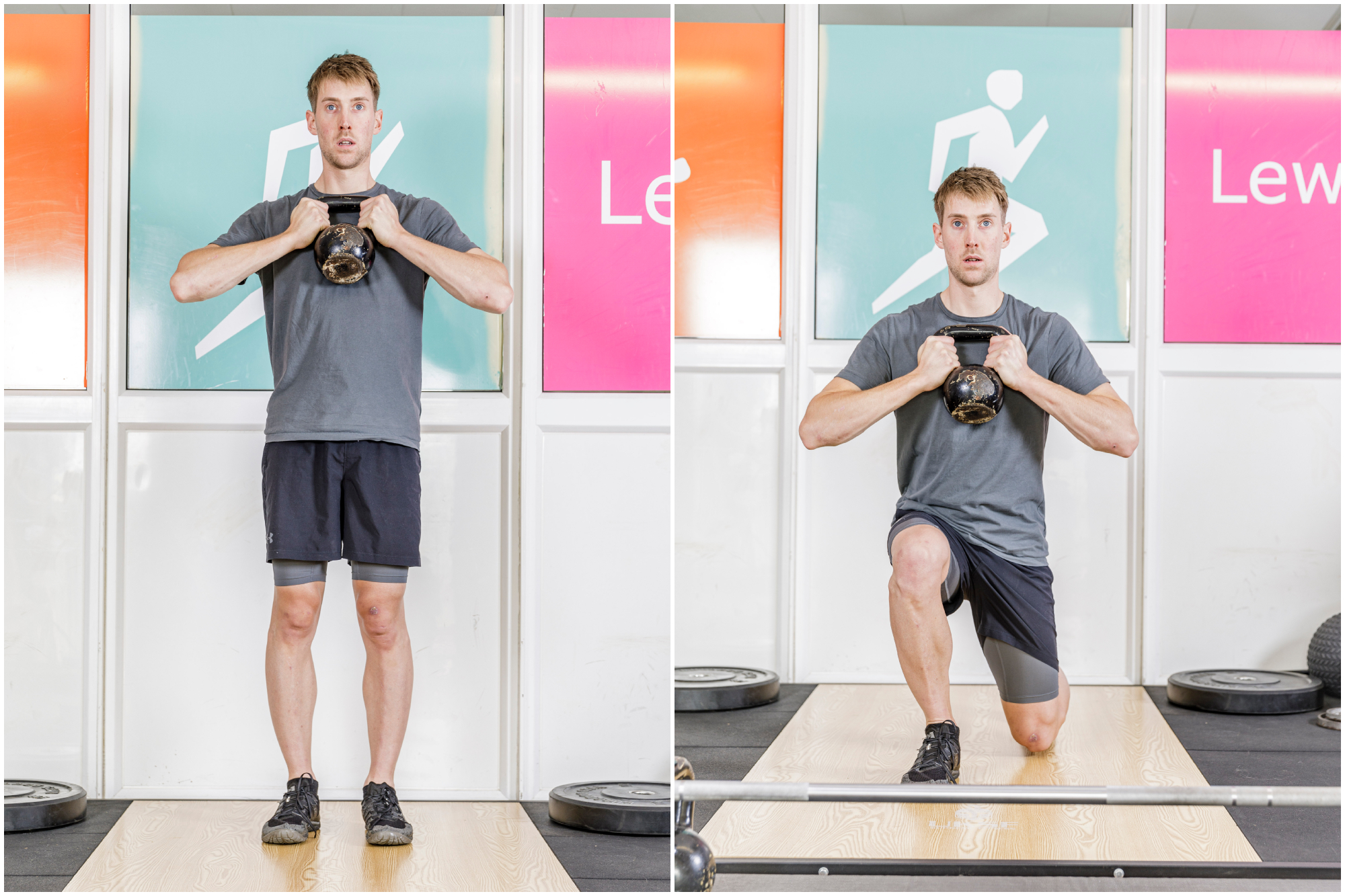
What and why? Lunges target all of the muscles involved in the cycling pedal stroke, exercising the hip, knee and ankle. Proficient lungers go faster.
How to do it? Take a big step back with one leg. Now, with hands on hips, bend both knees, lowering your body towards the floor. Straighten the back, and push back up to the starting position and repeat.
Benchmark: Start with two sets of 10 reps, and work up to three sets of 15.
Step it up: Add weight – a pair of 12kg dumbells or kettlebells is ideal.
7. Plank

What and why? Planking activates all of the core muscles that support good cycling posture, making us more fatigue-resistant.
How to do it? With your elbows under your shoulders, forearms flat on the ground, raise your body until there’s a straight line from the heels to the shoulders. Hold this position.
Benchmark: Start at one minute, and add five seconds every few days.
Step it up: Want a rock-solid core? Your aim should be to build up to a three-minute plank.
8. Press up
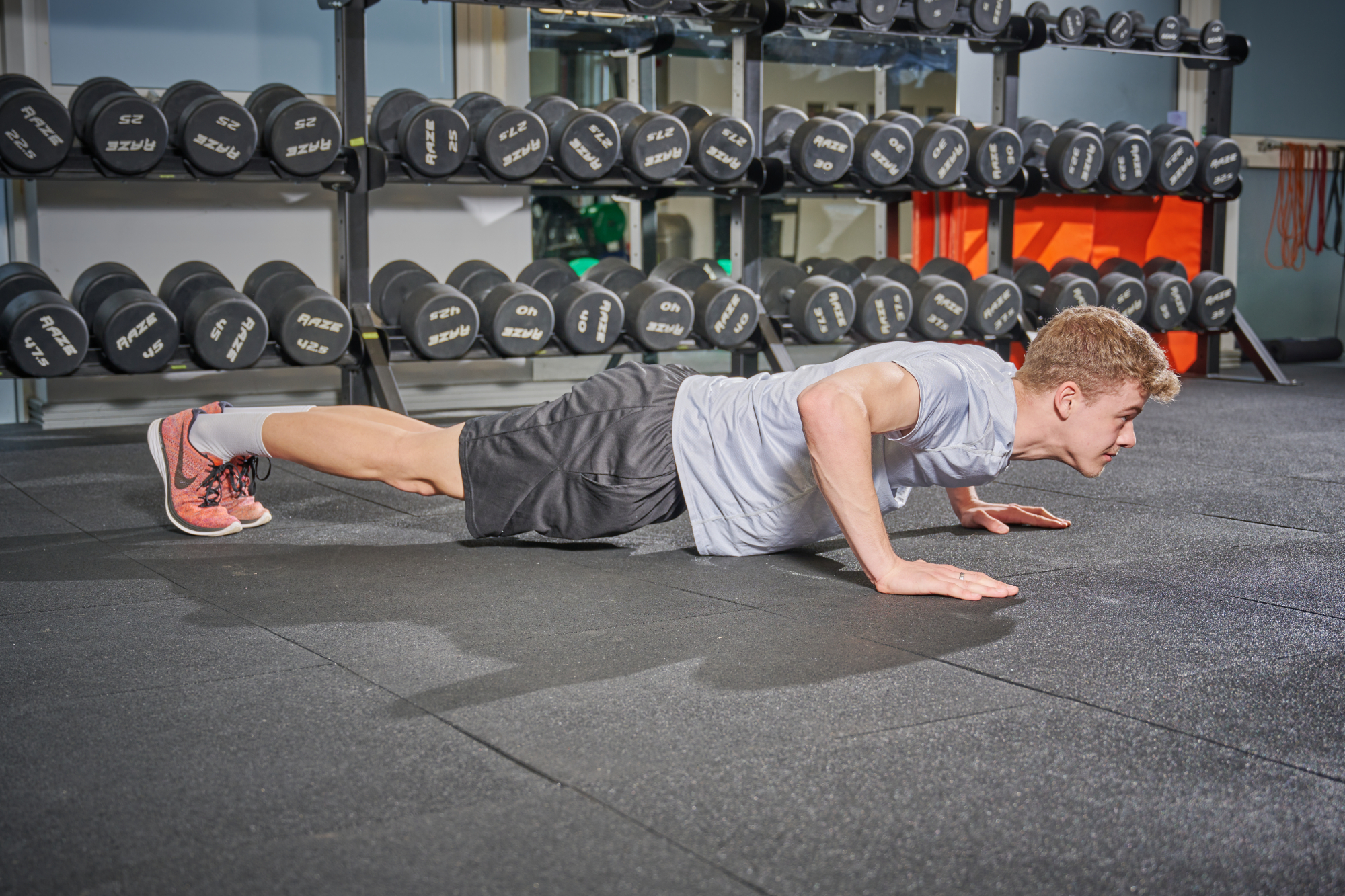
What and why? Cyclists are liable to neglect the upper body, but the press-up is a great way to strengthen the arms and shoulders, as well as the core. When you’re a few hours into a ride or long time trial, you’ll be grateful for the improved stability and endurance in the upper torso that this exercise can help to develop.
How to do it? Position the hands slightly wider apart than your shoulders, and keep your back straight – don’t elevate your bum. Slowly bend your elbows and lower yourself until your elbows are at a 90° angle.
Benchmark: Start with two to three sets of 10 reps, and gradually build up to 30 reps per set.
Step it up: Work your way up to being able to do single-arm press-ups.
General health benchmarks
The markers of all-round fitness go beyond strength and flexibility. The three tests in this section give a snapshot of your balance, respiratory function and the explosiveness of muscular response. Fun for all the family!
9. Standing on one leg
What and why: A decade-long study published last year found that an inability to hold a balanced position for 10 seconds was associated with an 84% increased risk of death from any cause, in particular cardiovascular and respiratory illnesses. Good balance matters.
How to do it: Raise one foot by bending a leg at the knee to 90°, balance on the standing leg and maintain the position.
Benchmark: Practise balancing on one leg every day for at least 10 seconds at a time.
Step it up: Aim for a full minute.
10. Holding your breath
What and why: The claimed benefits of breath-holding range from increased longevity to healthier stem cells to resistance to infections and improved lung function. Failing that, it’s a fun test!
How to do it? Sitting in a relaxed position, take a deep breath, fill your lungs to near capacity, close your lips, relax and hold your breath for as long as you can – but do not push into severe discomfort.
Benchmark: Most people manage 30-45 seconds. Aim for 60-90 seconds.
Step it up: Try box breathing: hold your breath for a minute, breathe normally for 90 seconds, then hold for another minute.
11. Vertical leap
What and why: Road cyclists aren’t renowned for our jumping skills, but a vertical leap measures our explosiveness and power – a great marker of athleticism.
How to do it? Place feet shoulder width apart, bend the knees, then jump, throwing up your arms for added lift. Do three sets of five reps. Jump next to a wall to measure the height achieved.
Benchmark: Aim for 40cm high.
Step it up: Strive to leap over 50cm.
If you have a set of dumbbells and you're looking for more excercises to mix up your off-the-bike workouts, over here you can find six strength-boosting dumbbell exercises for cyclists. And the same goes for kettlebells: here we cover four of the best kettlebell exercises for cyclists.
Pro rider views: ‘The gym works - you can feel the difference’
An Olympic gold medallist and one of Britain’s rising sprint stars, Matt Walls credits his ascension through the sport partly to the gym routine imposed on him when he was part of British Cycling’s academy. It is a structure he maintains through the winter with his road team Bora-Hansgrohe.
“The gym and the bike go hand-in-hand, and you can see the progress from time spent doing squats, leg presses and Romanian deadlifts,” says the 24-year-old. “You know it’s helping you and putting you in a position to be better on the road or track. It’s not always that you see a big jump in your numbers, it’s more a feeling. A big winter block is key, as it’s tricky to maintain during the season. It’s important to keep doing these exercises when you can. You can feel and see the difference.”
Jess Roberts, the 2018 British road race champion who has also won national, European and world medals on the track, shares Walls’s enthusiasm for the gym. “I don’t go to the gym twice a week just because it’s part of my training. It’s something I would choose to do anyway – because I can feel the difference,” she says, and refers to improvements across the board. “These exercises improve strength in general, help with robustness and help with injury prevention and recovery. You can be explosive with lifting and that will help explosiveness on the bike, whether it’s track or road. The gym really helps me to feel stronger and more stable.”
This full version of this article was published in the print edition of Cycling Weekly. Subscribe online and get the magazine delivered direct to your door every week.

Thank you for reading 20 articles this month* Join now for unlimited access
Enjoy your first month for just £1 / $1 / €1
*Read 5 free articles per month without a subscription

Join now for unlimited access
Try first month for just £1 / $1 / €1
A freelance sports journalist and podcaster, you'll mostly find Chris's byline attached to news scoops, profile interviews and long reads across a variety of different publications. He has been writing regularly for Cycling Weekly since 2013. In 2024 he released a seven-part podcast documentary, Ghost in the Machine, about motor doping in cycling.
Previously a ski, hiking and cycling guide in the Canadian Rockies and Spanish Pyrenees, he almost certainly holds the record for the most number of interviews conducted from snowy mountains. He lives in Valencia, Spain.
-
 Man hands himself in to Belgian police after throwing full water bottle at Mathieu van der Poel during Paris-Roubaix
Man hands himself in to Belgian police after throwing full water bottle at Mathieu van der Poel during Paris-Roubaix30-year-old was on Templeuve-en-Pévèle cobbled sector when television pictures showed the bottle hitting him in the face
By Tom Thewlis Published
-
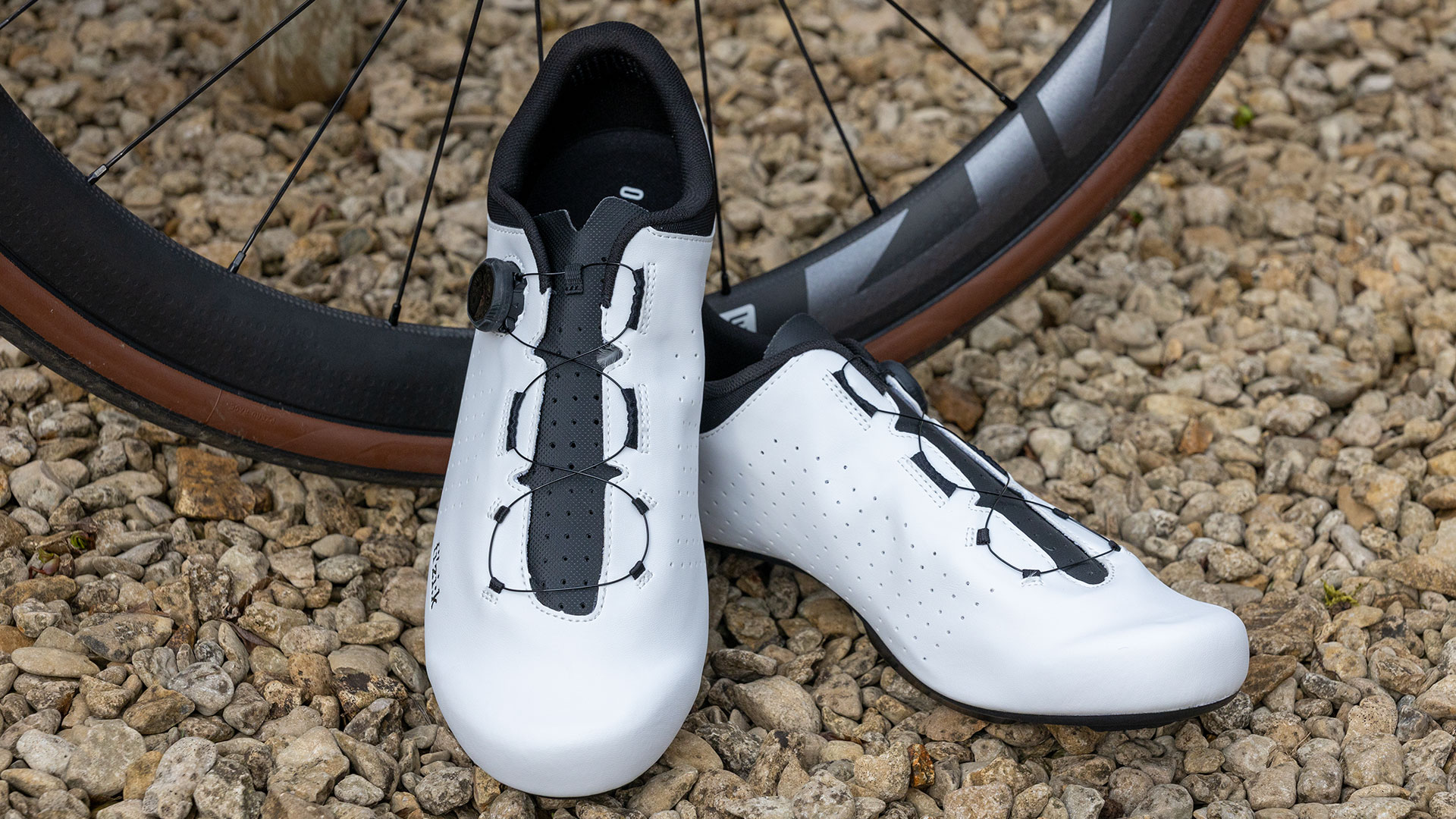 Fizik Vento Omna Wide shoe review: Yeti sneakers for those pedalling on a budget
Fizik Vento Omna Wide shoe review: Yeti sneakers for those pedalling on a budgetBroadly recommended for those of us with flipper feet
By Simon Fellows Published
-
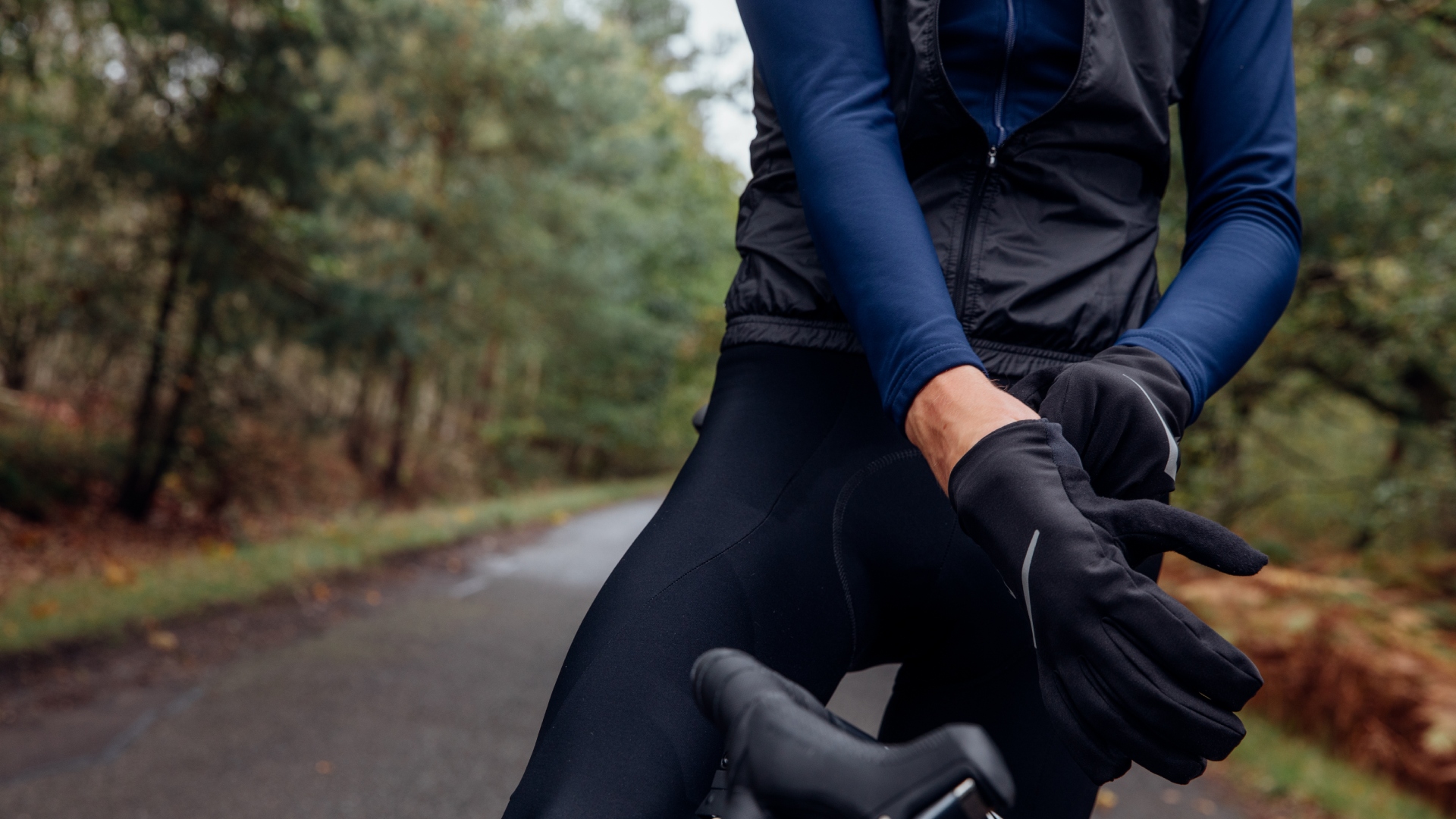 Riding with Raynaud’s: How to beat cold hands and feet over winter
Riding with Raynaud’s: How to beat cold hands and feet over winterSymptoms of Raynaud's syndrome extend far beyond simply having chilly hands and feet, our experts guide you through the how-to on making winter riding bearable despite the disease
By Lexie Williamson Published
-
 Does riding in the cold always have to slow you down?
Does riding in the cold always have to slow you down?Recent research reveals that starting a ride cold can decimate endurance. James Witts examines how rolling out toasty boosts staying power
By James Witts Published
-
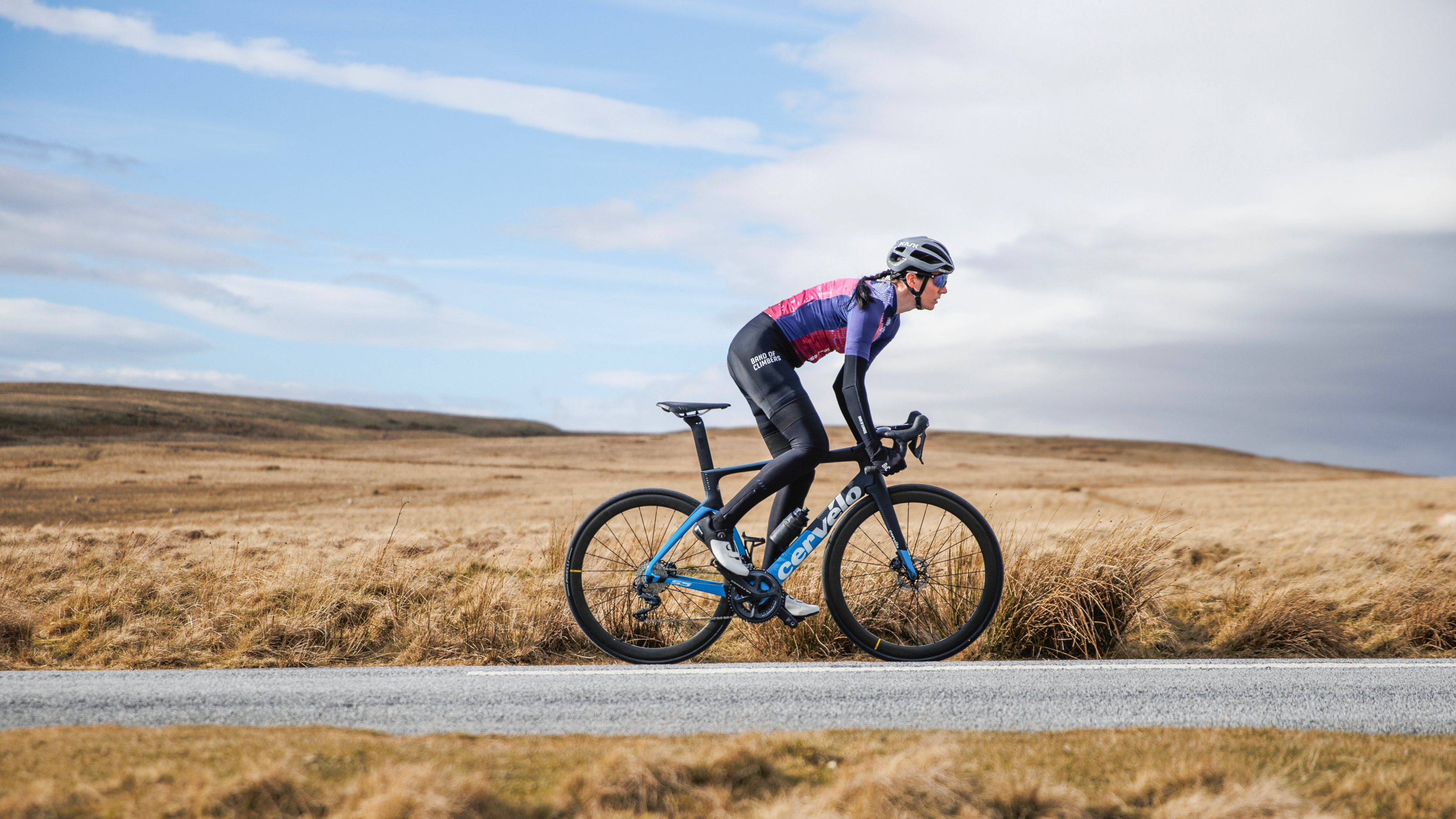 Forget 'new year, new me': 31 realistic, bitesized new habits for 2025
Forget 'new year, new me': 31 realistic, bitesized new habits for 2025Small adjustments to your daily routine can have a big impact on your cycling fitness. Lexie Williamson lists 31 good habits, one for each day of January
By Lexie Williamson Published
-
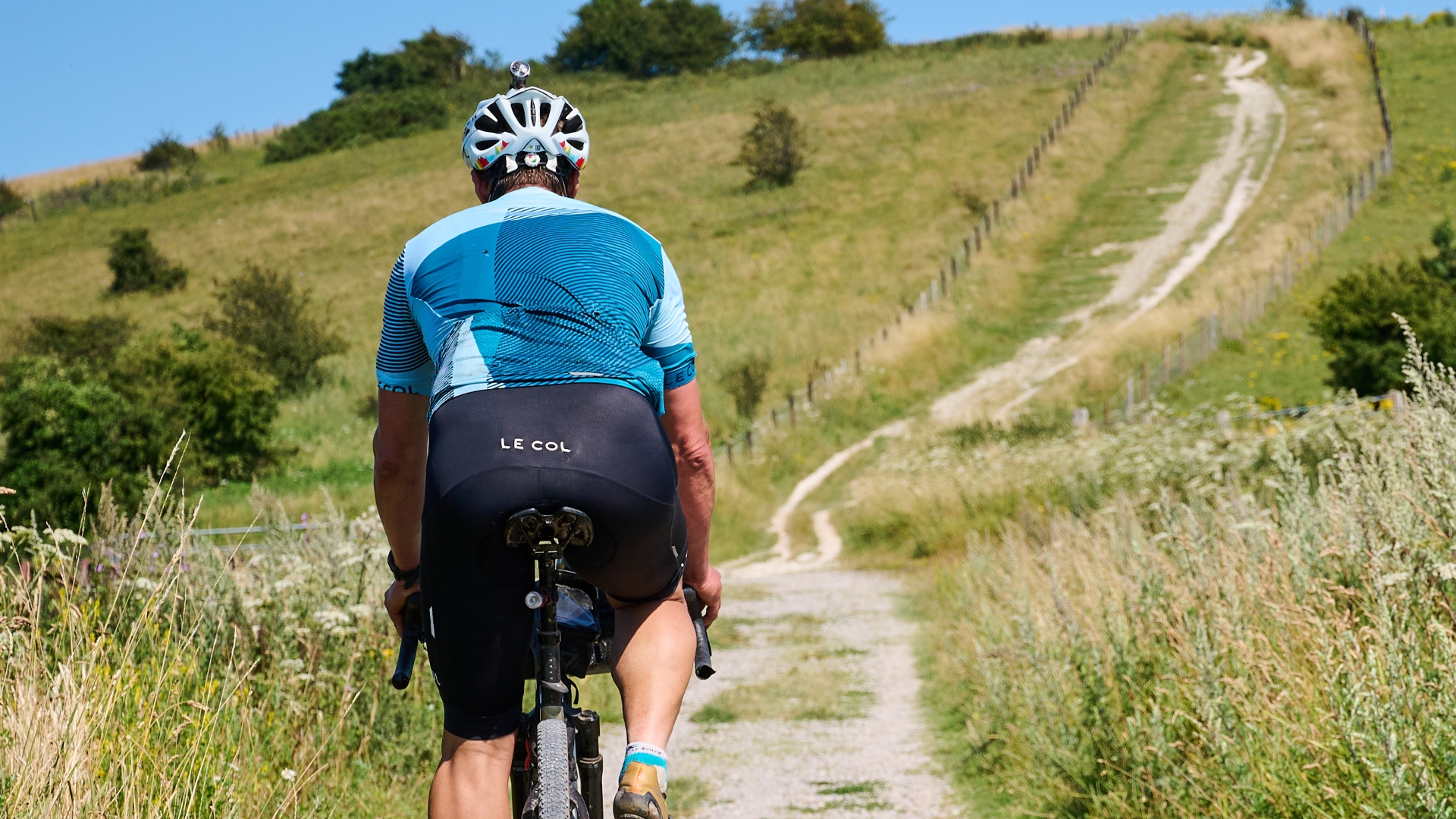 'My riding companion proceeded to fragment into countless tiny particles and dissolve into the night sky — I was hallucinating': Inside a 500km ultra ride
'My riding companion proceeded to fragment into countless tiny particles and dissolve into the night sky — I was hallucinating': Inside a 500km ultra rideKeen to test the limits of his well-matured endurance, Steve Shrubsall hurls himself headlong into a 500km ultra-endurance adventure across England's North and South Downs
By Stephen Shrubsall Published
-
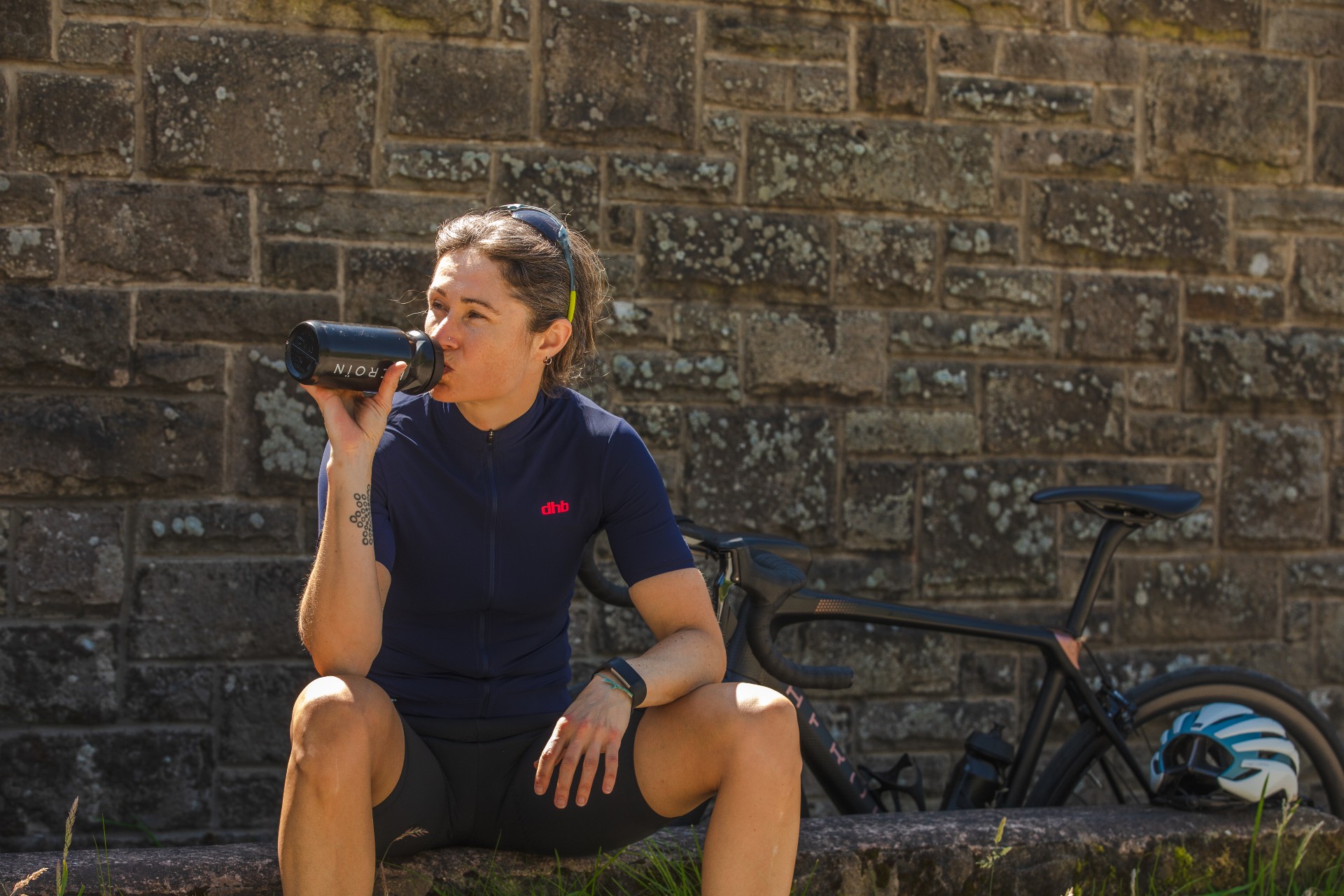 Hot weather cycling: 6 tips to help you keep your cool
Hot weather cycling: 6 tips to help you keep your coolA spell of hot weather needn't stop you enjoying your riding, as long as you take some precautions to prevent over-heating and dehydration
By Anna Marie Abram Published
-
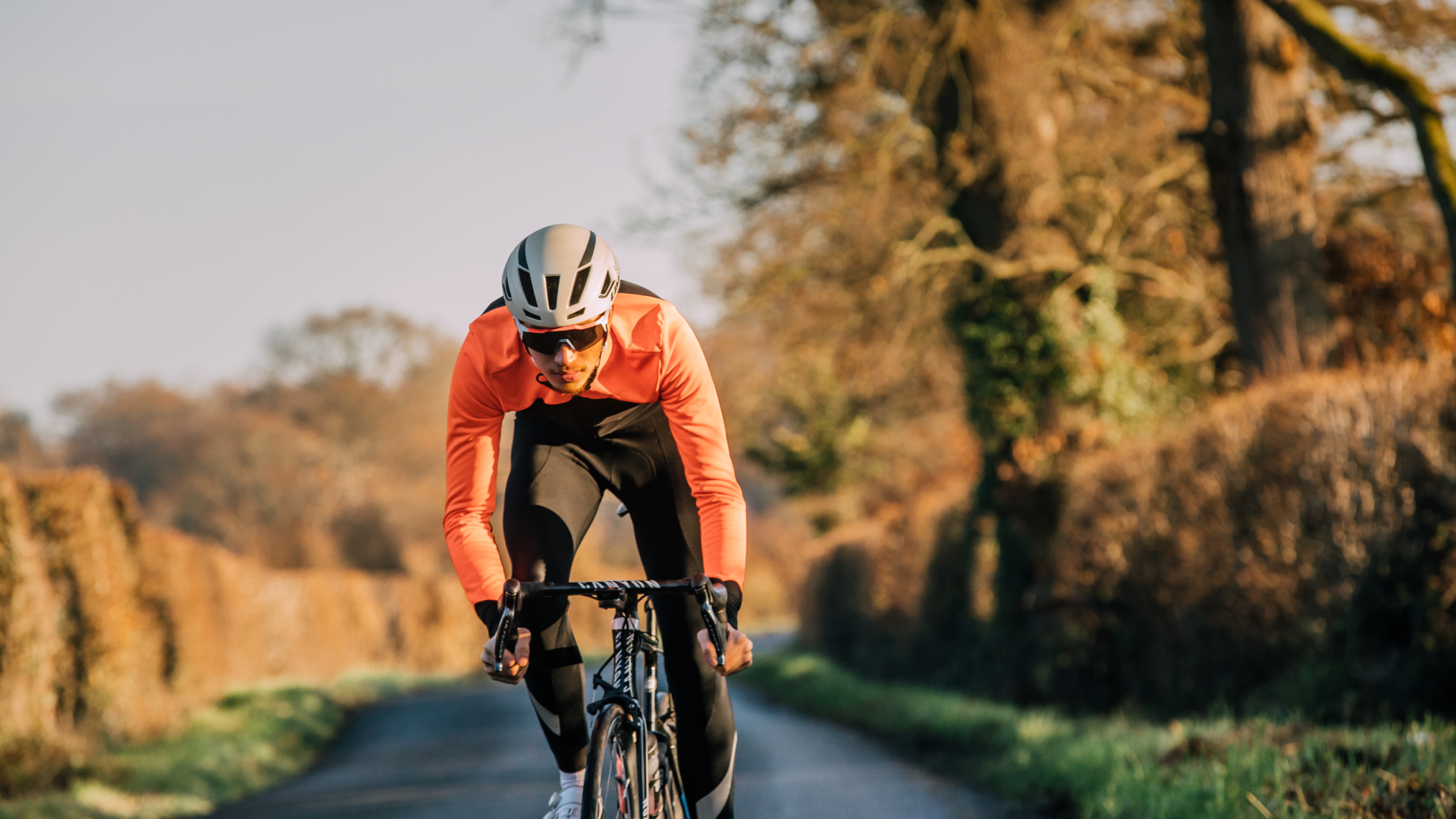 21 ways to get your season off to a flying start
21 ways to get your season off to a flying startMotivation is key: achievable, aspirational goals with clear checkpoints is a great place to start. Structured training, bike servicing and joining a club will all help set you on the right trajectory, too
By Charlie Allenby Published
-
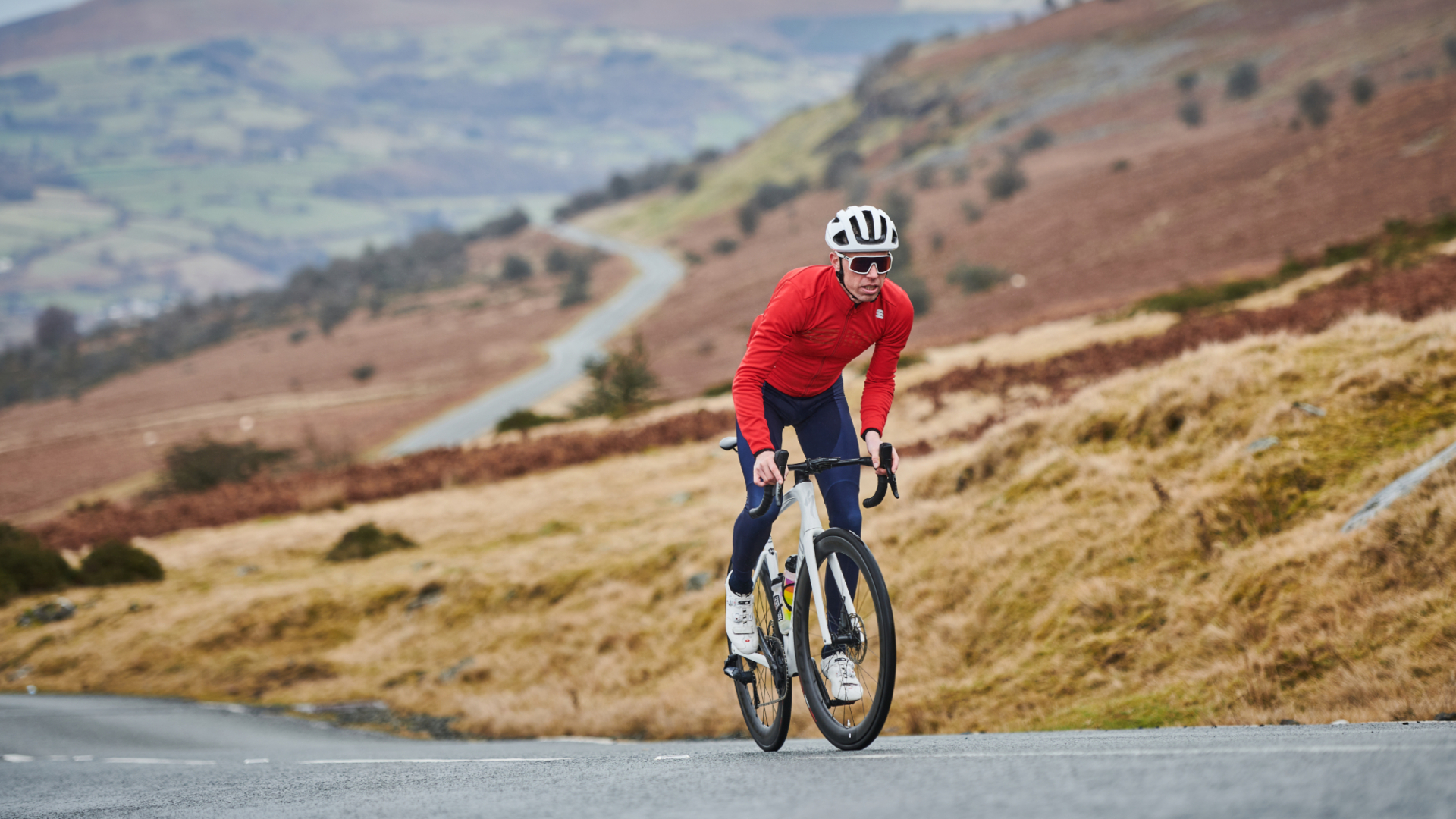 Eight-step guide to crafting your achievable goal this year, according to a cycling coach
Eight-step guide to crafting your achievable goal this year, according to a cycling coachHow to come up with a target you can hit - plus some pointers on how to stay on track
By Chris Marshall-Bell Published
-
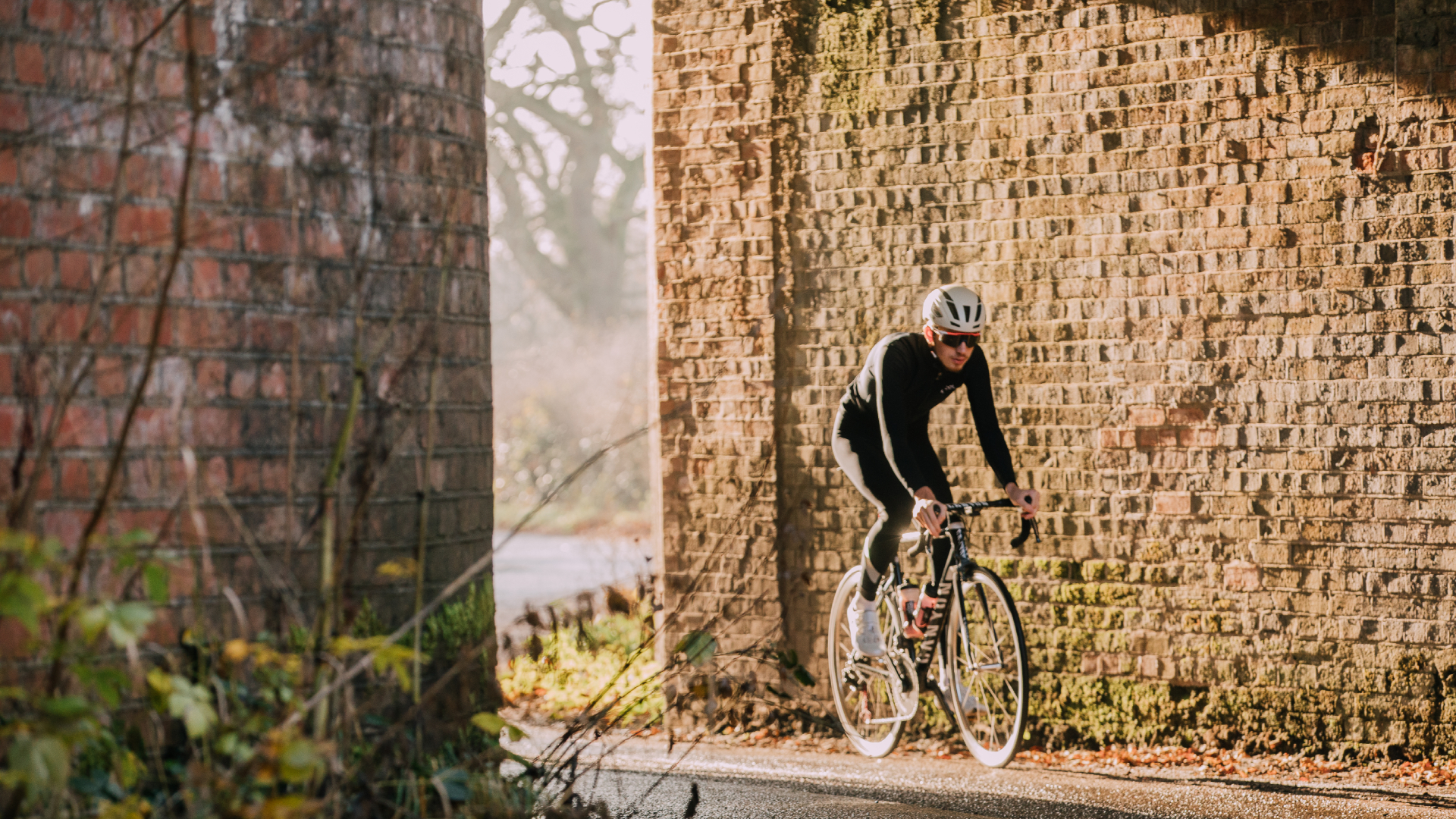 Why is everyone talking about Zone 2 training? Tadej Pogačar, or rather his coach, is responsible - here’s why
Why is everyone talking about Zone 2 training? Tadej Pogačar, or rather his coach, is responsible - here’s whyThe cacophony of praise for Zone 2 training of late left Chris Sidwells scratching his head. So he decided to find out what all the fuss was about
By Chris Sidwells Published